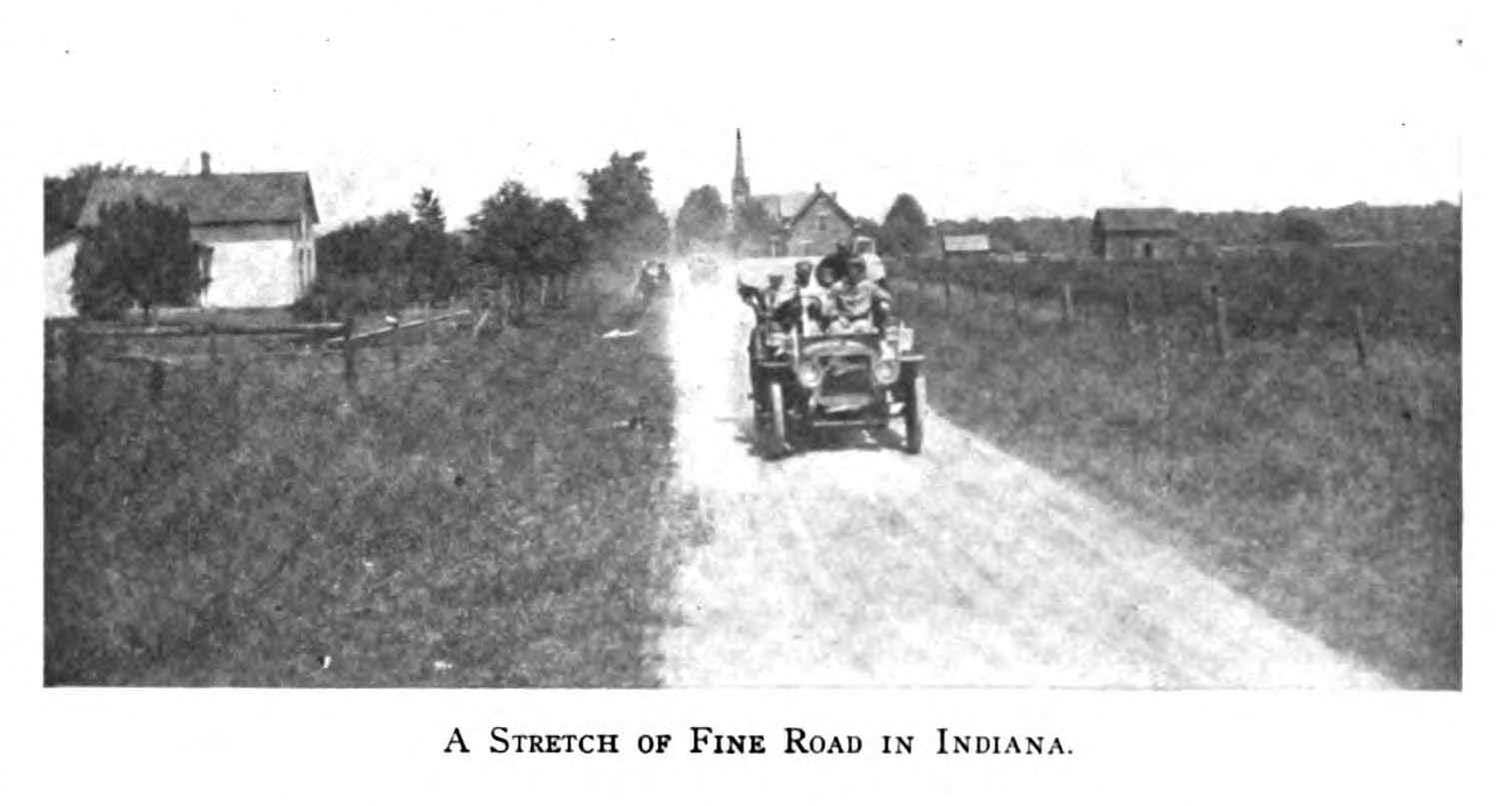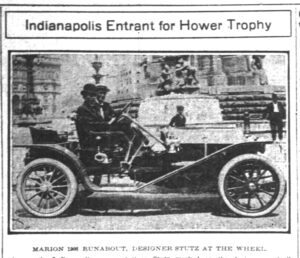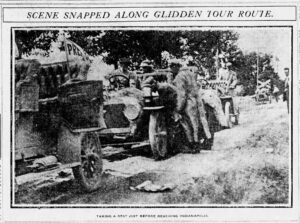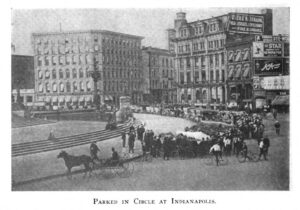By David Heighway, Hamilton County Historian
Over a century ago, Noblesville had an opportunity to witness cutting edge automotive technology when the Glidden Tour came through town. Officially named the Fourth Annual American Automobile Association Tour, this was a test of automobile reliability that went from Cleveland to New York via Chicago, Indianapolis, Columbus, Pittsburgh, and Baltimore – over 1,500 miles. [Illustration 1] The Glidden trophy was awarded to the winner. A separate award called the Hower trophy was given for runabouts, which were smaller two-person cars.
The tour was preceded a few months earlier by the “pathfinder” or “scout” car. This trip was done to make sure that the journey was even possible. This was long before any sort of organized national road system or any guarantee of paved roads. The scout car came through Noblesville on May 17 and was photographed while in town. [Illustration 2] Behind it, you can see businesses along Conner Street – Citizens’ Bank, Frank E. Ross’ Old Corner Drug Store, Sopher’s saloon, Darrah’s shoes, and Baker & Willits’ men’s clothing.
The tour started in Cleveland on July 10, with the trip from South Bend to Indianapolis occurring on July 16. The travelers were greeted with mostly positive reactions from the communities. However, there were some problems between Tipton and Noblesville. At one point, the cars had rotten eggs thrown at them. At another point, some workers sprayed passing motorists with a hose. Otherwise, the reception was very friendly.
The biggest event near Noblesville was a wreck involving Harry C. Stutz, the man who later created the Stutz Motor Car Company. [Illustration 3] At this time, he worked for the Marion Motor Car Company and was driving a runabout which he had designed. Somewhere around Tipton, the car broke a rear wheel hub, throwing Stutz and his co-driver out. At first, they were unhurt, but as they were trying to repair the car, the next vehicle in the tour ran into them. Harry sprained his wrist, and the car was out of the running. Everyone went to Noblesville to regroup. The mayor of Indianapolis had come to Hamilton County to ride into the city with the Stutz car but now had to find other transportation. Harry would have a later connection to Noblesville when he built the Stutz building in 1914 with Noblesville architect Donald Graham.
The tour came down the road that is the modern Highway 19, turned left to cross the covered bridge at Logan Street, and turned right to go south on Eighth Street through the city, crossing Stoney Creek south of town. At that time, that was the only route from Noblesville to Indianapolis. The Tenth Street embankment and bridge was not built until 1925. Instead, the road paralleled the railroad. This got somewhat dangerous as there was no bridge where the railroad crossed Allisonville Road. The rail line crossed at road level which gave the spot the nickname of “Dead Man’s Crossing”. A viaduct was finally built in 1914.
The tour continued south on Allisonville Road over a route that was used by Carl Fisher for a race in 1901. There is a photograph in the Indianapolis Star showing a repair stop possibly on Allisonville at 61st Street. [Illustration 4] You can see a railroad crossing behind the cars, which would have been the Lake Erie and Western Railroad line, now part of the Nickel Plate Trail. The tour went to Monument Circle where they parked overnight. [Illustration 5} The next morning, they left Indianapolis to finish the run.
The event was repeated in 2000 when the History Channel Great Race came through Noblesville on June 15. The city put on a good show. (However, there were some complaints from locals about having 9000 people in town who were blocking traffic and taking up parking spaces.) Noblesville was voted the Best Stop by the drivers, and the History Channel gave an award of $5000 to the Noblesville Library.





